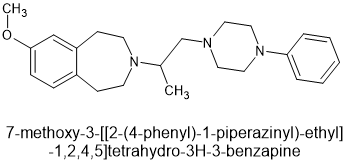Image sulfobemidone hosted in ImgBB

ibb.co
I found this via Reaxys and it's from a German article. It is on the Eunoia disc (for those that have it).
The ethylsulfonate & n-propylsulfonate homologues were both equipotent with ketobemidone.
I've always been fascinated by ketobemidone, especially when I discovered picenadol. What is interesting is that the (3R,4R) enantiomer of picenadol is a pure agonist while the (3S,4S) enantiomer is a pure antagonist. Now, I KNOW that researchers tried adding a 3-methyl to ketobemidone but it wasn't very active. Looking back, I do wonder if they separated the enantiomer. If not, they would end up with a mixed agonist/antagonist and so it would not have fitted in with the known (at the time) QSAR.
Well, 25mg of ketobemidone is supposed to be as potent as 60mg of morphine making it about 2½ more potent. IF it turns out to follow the prodine QSAR then then the most potent enantiomer of 'methylbemidone is very likely the (3R,4R). It's dangerous to simply multiply up potency values BUT (3R,4R) methylbemidone could be about x20 morphine.
If someone could quietly obtain the chiral precursor (say 1-[(3R,4R)-4-(3-hydroxyphenyl)-3-methylpiperidin-4-yl]propan-1-one) then it would be an interesting RC.
Sadly, since the UK introduced the CsA laws, it seems that RC vendors don't employ medicinal chemists. I haven't seen a single new scaffold in a decade or more.
Of course, U-47700 was almost a PERFECT RC because it could be made in bulk in 1 step from 2 commercially available chemicals.
I have been saving up U-93951 but nobody is prepared to invest in developing anything new (development takes time, resources, skills and most of all - MONEY).
*Edit*
I've found an English language patent for the ethanesulfonate analogue of ketobemidone: US 2777850 '4-ethanesulfonyl-4-aryl-1-methylpiperidines and their preparation'.
I am very suspicious of Sydney Archer who, if the patents are to be believed worked on a HUGE range of compounds. It seems more likely that the Germans didn't patent the class and with their being no English language versions of the paper, got away with patenting it. That or BASF sold all of their US rights to Sterling Drugs and Mr. Archer got his name on them all.














